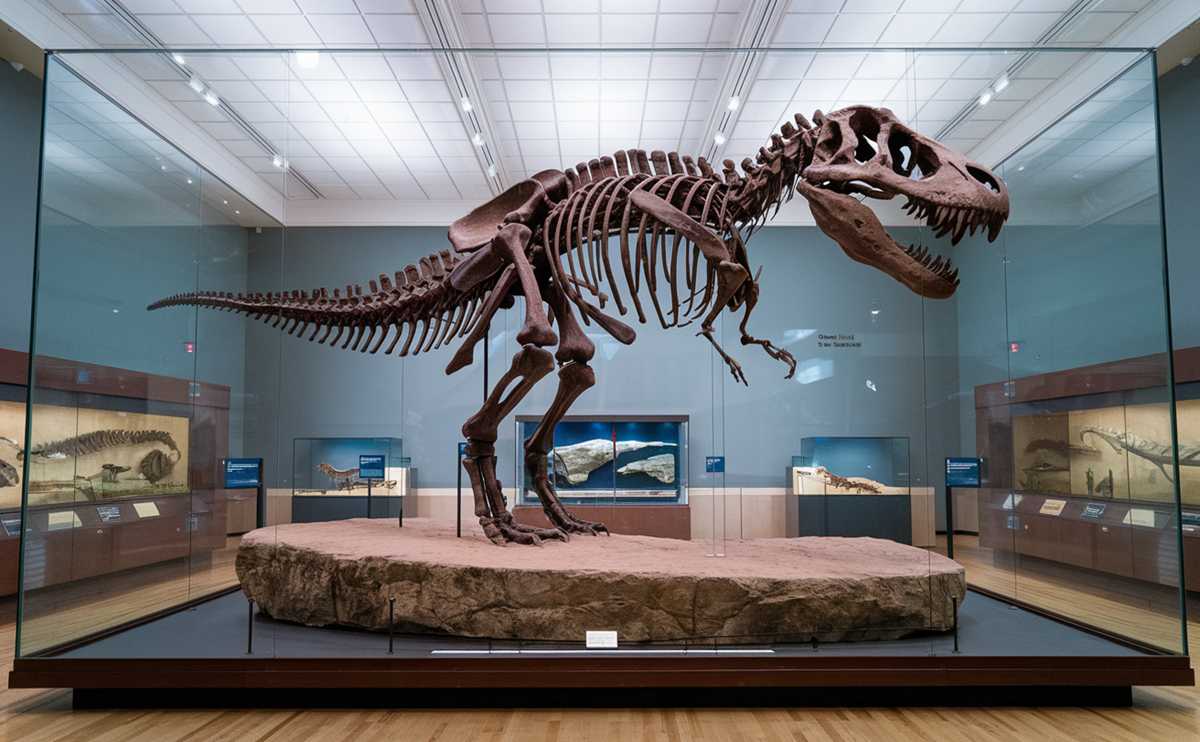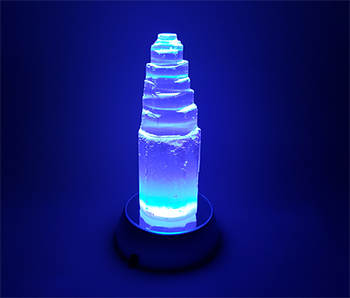In this article / Jump to
Introduction
Understanding Dinosaur Fossils
The Fossilization Process: How Dinosaur Bones and Remains are Preserved
Types of Dinosaur Fossils
The Role of Paleontology in Uncovering Prehistoric Life
Fossil Preservation: Protecting Dinosaur Fossils for Future Generations
The Importance of Fossil Evidence and the Fossil Record
Collecting Dinosaur Fossils: A Fascinating Hobby and Responsibility
Conclusion: Embracing the Legacy of Dinosaurs Through Fossils
Frequently Asked Questions (FAQs)
Introduction
Have you ever stepped back in time? That’s what dinosaur relics do! They show us what life was like millions of years ago, in the Mesozoic era. These old bones, teeth and even dinosaur droppings and shells can tell us a lot. These treasures tell the story of dinosaurs and their world. And as more and more people start collecting fossils, it becomes increasingly crucial to know how fossils are made. Whether you’re a collector or just beginning to take an interest in paleontology, delving into the dinosaur fossil record is like stepping into a time machine.
Understanding Dinosaur Fossils
Dinosaur fossils represent the preserved remains or impressions of dinosaurs that roamed the Earth from around 230 to 65 million years ago. Fossilized bones, teeth, and sometimes even entire skeletons have survived through the fossilization process, allowing scientists and collectors alike to study these ancient creatures. These fossils are more than relics; they are windows into the past, revealing clues about dinosaur behaviors, diets, habitats, and interactions with other species.
The Fossilization Process: How Dinosaur Bones and Remains are Preserved
Fossilization is a rare event that occurs under specific conditions. Typically, after a dinosaur died, it would have to be quickly buried by sediment like mud, silt, or volcanic ash to prevent decay. Over thousands to millions of years, the organic materials in the bones were replaced by minerals, creating fossilized bones. This process not only preserves bones but can also capture smaller fragments like dinosaur teeth, coprolite (fossilized feces), and dinosaur eggshells, providing a more complete picture of prehistoric life.
The fossil formation process is complex, and each fossil represents a unique specimen. Some fossils reveal intricate details, while others are partial or fragmented. Regardless of the form, each fossil specimen contributes to our understanding of dinosaurs and their ecosystems.
Types of Dinosaur Fossils
- Dinosaur Bones: The most common and sought-after type of dinosaur fossil, fossilized bones provide structural details and insights into the physicality of dinosaurs.
- Dinosaur Teeth: Fossilized teeth are essential in understanding the diets and behaviors of different species. Herbivorous dinosaurs had flat teeth, while carnivorous dinosaurs had sharp, serrated teeth designed for tearing meat.
- Dinosaur Coprolite: Fossilized feces, or coprolite, offers information on the diet and digestive processes of dinosaurs, revealing what plants or animals they consumed.
- Dinosaur Eggshells: Although rare, fossilized eggshells and nests are crucial for studying dinosaur reproduction and nesting behaviors.
The Role of Paleontology in Uncovering Prehistoric Life
Paleontology, the scientific study of fossils, plays a vital role in our understanding of dinosaur fossils and prehistoric life. Paleontologists analyze fossilized remains to uncover details about the biology and evolution of dinosaurs. Fossil evidence, along with fossilized remains, offers clues to how dinosaurs interacted with their environment and each other. The fossil record is a chronological collection of fossils that helps scientists map the history of life on Earth and understand evolutionary changes over millions of years.
Fossil Preservation: Protecting Dinosaur Fossils for Future Generations
Fossil preservation is critical to safeguarding our prehistoric past. The natural fossilization process is complex and takes millions of years, making dinosaur fossils an irreplaceable resource. Many fossil specimens are kept in museums for public viewing and scientific research, while others are part of private collections. Responsible fossil collection and preservation are essential to protect these resources from degradation.
The Importance of Fossil Evidence and the Fossil Record
The fossil record acts as a timeline of prehistoric life, showing the evolution of species over time. Fossil evidence from dinosaur fossils helps scientists identify new species, track evolutionary changes, and even determine migration patterns of prehistoric animals. Dinosaur fossils, especially those found in diverse geographic locations, have helped confirm theories about continental drift and changing ecosystems throughout Earth’s history.
Collecting Dinosaur Fossils: A Fascinating Hobby and Responsibility
Fossil collection can be an exciting and educational activity, allowing enthusiasts to own a tangible piece of history. However, it is essential to approach fossil collecting responsibly. Each fossil specimen, from a fragment of fossilized bone to a complete dinosaur skull, holds scientific value. By obtaining fossils legally and from reputable sources, collectors can help ensure the preservation of these natural wonders. Fossils are an invaluable part of our natural heritage and serve as a bridge to a world we can only imagine.

Conclusion: Embracing the Legacy of Dinosaurs Through Fossils
Dinosaur fossils continue to captivate scientists, collectors, and enthusiasts worldwide. From the study of fossilized bones and teeth to the discovery of rare dinosaur coprolite and eggshells, each fossil offers a new piece of the puzzle, bringing us closer to understanding the prehistoric world of dinosaurs. The fossilization process, fossil preservation efforts, and the contributions of paleontology all help to protect and interpret these remnants of the past. By studying dinosaur fossils, we connect with Earth’s ancient history and gain a deeper appreciation for the life that once flourished millions of years ago.
Frequently Asked Questions (FAQs)
Q: When was the first dinosaur fossil discovered?
A: The first dinosaur fossil was discovered in 1824 by William Buckland, a British paleontologist, who identified it as a large carnivorous dinosaur called Megalosaurus. This marked the beginning of dinosaur paleontology.
Q: What dinosaur fossils have been found in Georgia?
A: In Georgia, some dinosaur fossils have been found, mainly from smaller, herbivorous species, as well as fossils of large prehistoric reptiles like the mosasaur. The state’s geology primarily reveals fossils from marine environments of the Mesozoic era.
Q: How much is a real dinosaur tooth worth?
A: The value of a dinosaur tooth depends on its size, species, and condition. A tooth from a well-known species like a Tyrannosaurus rex can range from hundreds to thousands of dollars, while teeth from smaller or lesser-known species are generally less expensive.
Q: Can I legally own a dinosaur fossil?
A: Yes, in many countries, it is legal to own dinosaur fossils if they were acquired legally. However, regulations vary widely by country, and it’s essential to ensure that any fossil purchase complies with local and international laws.
Q: Where can I buy dinosaur fossils?
A: Dinosaur fossils are available from specialized fossil dealers, reputable online stores, and auction houses. It’s crucial to buy from sources with good reputations to ensure authenticity.
Q: How do I know if a dinosaur fossil is real?
A: Authentic fossils will often come with documentation of provenance, such as where and when they were found. Real fossils feel heavier than replicas due to mineralization, and experienced sellers can provide certificates of authenticity.
Q: What is the rarest dinosaur fossil?
A: Some of the rarest fossils include those of recently discovered or unique species. Examples include complete or near-complete fossils of iconic species like the Tyrannosaurus rex, which are exceedingly rare and highly valuable.
Dinosaur fossils offer a direct link to the prehistoric world, whether they are massive skeletons or small fragments. As our knowledge of paleontology grows, so does our appreciation for these remarkable relics of Earth’s ancient history.


